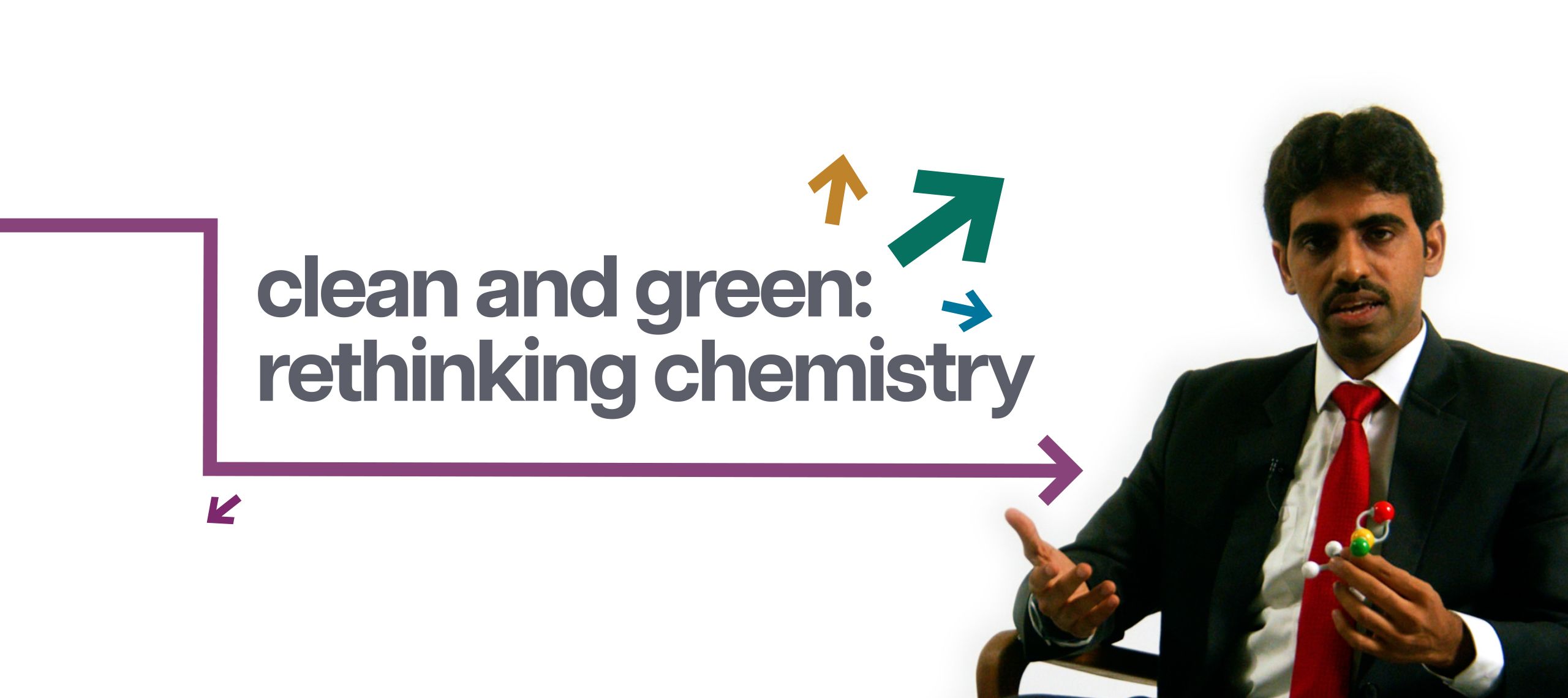
Research Journeys: Clean and green: Rethinking chemistry
I had been extensively using these toxic carbon-based solvents, unaware of the extent of damage they were causing to us and the environment.
Working with dangerous solvents to create chemical compounds is commonplace for a chemist. But not for Krishna, who after seeing an inspiring talk by Frances Arnold, wanted to develop a more sustainable and planet-friendly solution.
His work puts the planet first, helping the UK to reduce its carbon emissions. He hopes to establish world leading research in sustainable organic chemistry.
Krishna is a Research Fellow in the School of Chemistry.
Read more about Krishna and his research.
Transcript
[Krishna is sitting in front of a white background speaking directly to camera.]
Krishna: So, I remember during my early childhood days back in my hometown in Delhi, India, when my parents, who happened to be chemistry professors, used to bring these colourful solutions in test tubes, which I was quite fascinated with.
So, I eventually began my undergraduate studies in chemistry, having been subconsciously inspired by my parents profession, at St Stephen's College in Delhi, where I developed a further interest in pursuing postgraduate studies in organic chemistry, thanks to some really good organic chemistry teachers I had the opportunity to be taught by.
So, I moved to the University of Oxford, in the UK, to pursue my masters in organic chemistry, where my research work involved making molecules selectively. So just like how your two hands have the same fingers, but a difference of their arrangement can give them different functions, for example, only your right hand will fit into a right-handed glove. Similarly, in chemistry, two molecules having the same atoms but connected differently can have different properties. For example, one molecule may cure a disease, while the other may cause a disease. And my master's research work was focussed on making that one form of the molecule, the beneficial form, selectively.
So by the end of my masters at Oxford, I was interested in the idea of applying organic chemistry to biology, and that's when I moved to the University of Cambridge, where my research work involved developing these effective molecules to inhibit interactions between proteins as a strategy to combat cancer.
Now all this while during my masters and PhD at Oxford and Cambridge, I had been extensively using these toxic carbon-based solvents, unaware of the extent of damage they were causing to us and the environment. It was only during the final year of my PhD that I attended this green chemistry workshop, which made me aware of the damage that these solvents were doing to our environment. I got to know that the production and disposal of these carbon-based solvents releases carbon dioxide into the atmosphere, which is contributing to climate change. Not just that. They are also having a massive impact on human health and well-being.
So, around the completion of my Ph.D., I had the opportunity to attend this really inspiring talk by Professor Frances Arnold, who happened to have just won the Nobel Prize for her pioneering work on the use of enzymes from nature to do chemical reactions.
She mentioned in her talk that nature is the best chemist. Nature is able to make molecules without harming us and the environment. So, if nature can make these molecules without causing us any harm, why can't we as chemists be creative and come up with innovative solutions to make molecules in a sustainable manner?
So having been deeply inspired by that, I moved to the University of Leeds for my postdoctoral research work, which happens to be a
champion of sustainability and ranks first in the UK for three of the Sustainable Development Goals set by the United Nations.
So, if we know that carbon-based solvents are causing so much damage to us and the environment, what can we do about them? Well, we can stop using these harmful solvents and replace them with something which would be environmentally friendly, sustainable, and economical. And that's something, as you probably guessed, which has all the above properties, would be water to use as the reaction media.
Now, one of the organic chemical reactions that I focus on is attaching fluorine atoms to organic molecules. Why? Because a quarter of all the drugs currently in the market have fluorine atoms within them. For example, this is a molecular model of a molecule that is used to treat Alzheimer's disease. And here in green, you can see the fluorine atom attached to the molecule.
You can imagine how important it is for us as chemists to come up with these effective ways of making these fluorine containing molecules in a sustainable manner. However, currently, all the ways of making these fluorine molecules use heavy amounts of carbon-based solvents.
Well, can we do this chemistry in water? Can we attach fluorine atoms to molecules in water? Well, the problem is the fluorine atom really loves water, and when it is taken in water, it just gets surrounded by water molecules, which makes it unreactive.
So our research work of replacing these toxic carbon based solvents with water as the reaction media will assist the UK in achieving their climate change targets, such as net zero emissions by 2050, and will also assist the United Nations in meeting the Sustainable Development Goals in order to achieve a cleaner, safer and more sustainable future for all of us.